5 Types of Cockroaches in Iowa (With Pictures)
-
Greg Iacono
- Last updated:
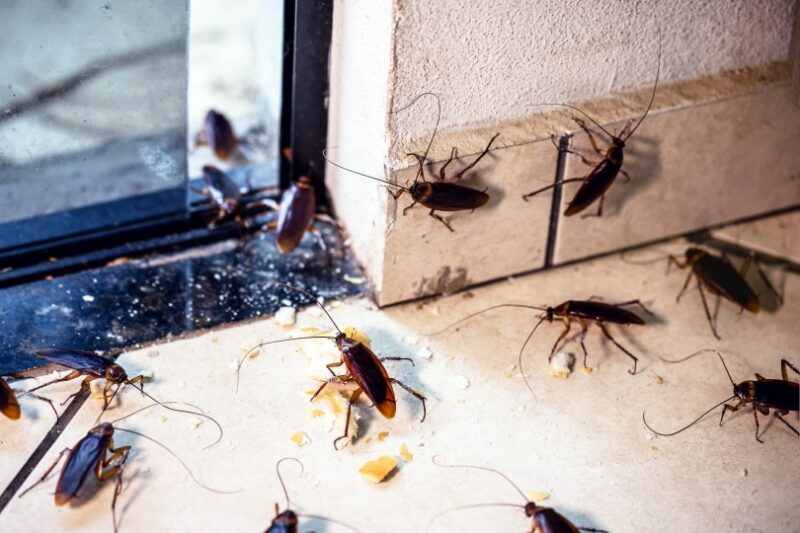
Few insects can make your skin crawl worse than the cockroach, one of the most unappealing critters on planet Earth. Cockroach infestations cause allergies, trigger asthma, and spread germs and bacteria. They also breed incredibly fast, which makes cockroaches very difficult to get rid of.
That’s likely because cockroaches are one of the most highly adaptable insects in the world. Luckily, even though there are over 4,000 species of cockroach, only five are found in the Hawkeye State. If you’re interested in knowing about those five species, read on. We have all the information you need to know about the five types of cockroaches in Iowa below.
The 5 Types of Cockroaches in Iowa
1. German Cockroach
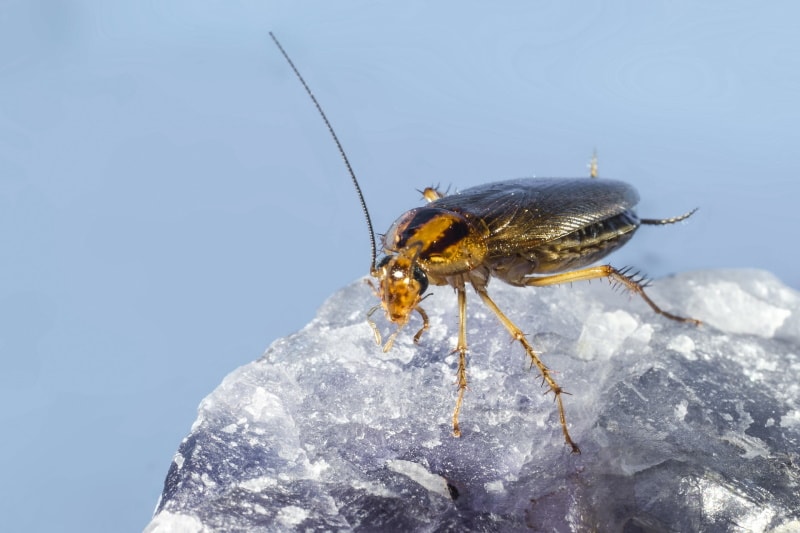
| Scientific Name: | Blatella germanica |
| Size: | ½ inch |
| Found In: | Kitchens, bathrooms |
| Lifespan: | 20 to 30 weeks |
You’re not alone if you have German cockroaches; they’re the most common type in Iowa. You’ll usually find them in your kitchen or your bathroom, where they eat food scraps, crumbs, and even toothpaste. German cockroaches are relatively small at only ½ an inch long.
On their back, you’ll find two dark brown stripes, although baby German cockroaches (called nymphs) don’t have the stripes. The biggest problem controlling German cockroaches is that they breed incredibly fast, with females laying up to 50 eggs every time. Preventing the spread of German cockroaches demands that you keep your kitchen and bathroom meticulously clean because they will find even the smallest speck of food.
Interestingly, although they have wings, German cockroaches don’t fly but instead glide where they want to go. They also run toward lights, something most cockroaches do, unlike what’s shown in most horror movies, where they run away from the light.
2. Oriental Cockroach

| Scientific Name: | Blatta orientalis |
| Size: | 1 inch |
| Found In: | Crawl spaces, basements |
| Lifespan: | 1 to 6 months |
Oriental cockroaches are Larger and darker in color than German cockroaches, and they’re just as adaptable. Oriental cockroaches are also very common in Iowa and can be found anywhere that’s dark and damp, especially basements, crawl spaces under your house, and sheds. Oriental cockroaches eat any decaying organic matter, including sewage, garbage, meat, and the blueberry you accidentally dropped behind the oven last summer.
One bit of good news is that Oriental cockroaches don’t multiply as fast as German cockroaches. Females lay egg capsules that usually have about 30 eggs in them, and they can only lay about eight of these capsules during their lifetime. Like German cockroaches, Oriental cockroaches also have wings, but they don’t fly very often, especially if they have a constant food source.
One reason to eradicate these cockroaches is that they carry E. coli and salmonella, which can make you deathly ill. Also, if your home has a bad infestation of Oriental cockroaches, they can trigger asthma attacks.
3. Pennsylvania Wood Cockroach
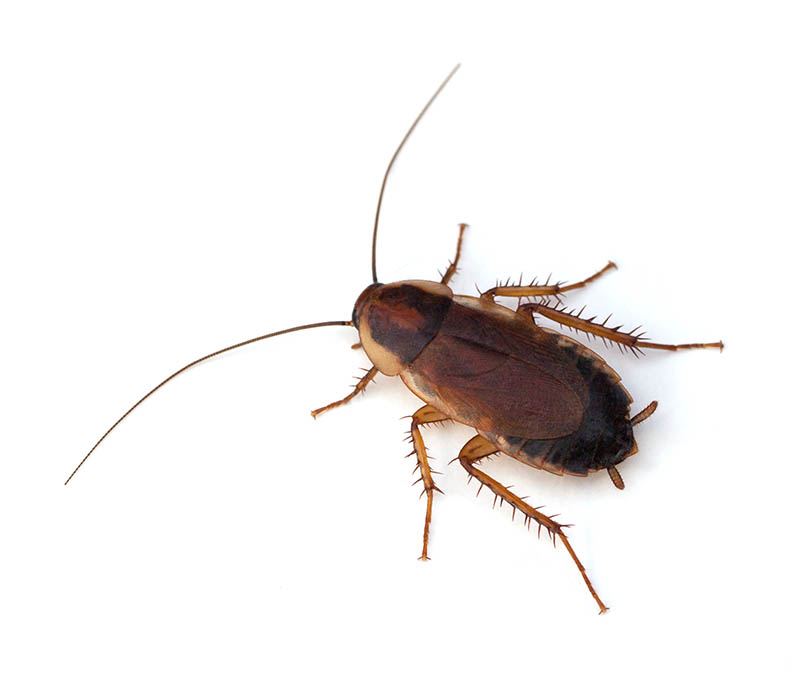
| Scientific Name: | Parcoblatta pensylvanica |
| Size: | 1 inch |
| Found In: | Basements, crawl spaces, sheds, garages |
| Lifespan: | 12 to 18 months |
Another cockroach common to Iowa is the Pennsylvania wood cockroach which, like Oriental cockroaches, like damp, dark areas of your home. These cockroaches also like to live in an urban setting and can often be found in office buildings, retail stores, and apartment complexes, especially around dumpsters.
However, they don’t need dumpsters to survive because the Pennsylvania wood cockroach is an omnivore that eats various foods, including other insects, many types of plants, and human garbage. Like Oriental cockroaches, Pennsylvania wood cockroach females lay egg capsules that contain about 30 eggs each.
One difference is that the female can continue to lay her egg capsules for much longer. As with all cockroach species, removing their food source will keep Pennsylvania wood cockroaches from infesting your home, so keep your kitchen and bathroom clean as a whistle.
4. Brown-banded Cockroach
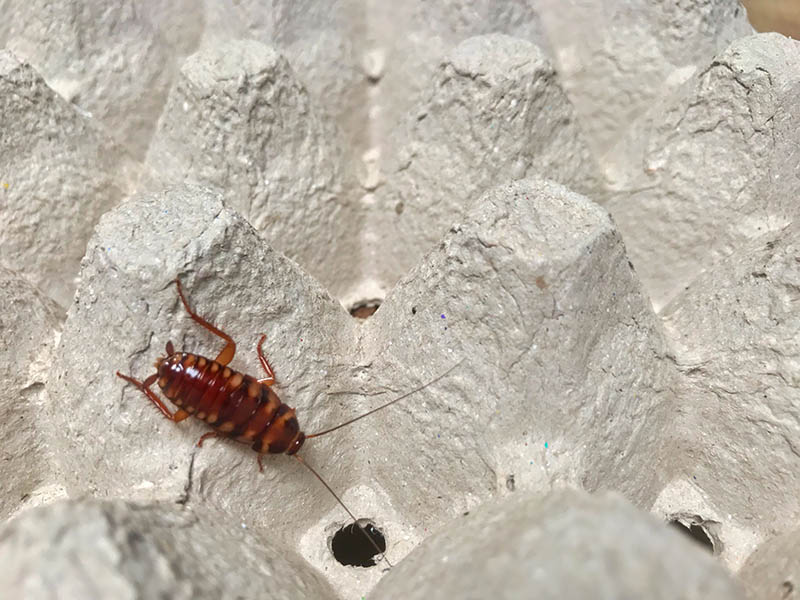
| Scientific Name: | Supella longipalpa |
| Size: | ½ inch |
| Found In: | Kitchens and bathrooms |
| Lifespan: | 12 months |
Another unfortunately common cockroach in Iowa is the Brown-banded cockroach, which is a type you’ll find all over the United States. Unlike the other cockroaches on today’s list, Brown-banded cockroaches like to live and breed where it’s warm and dry, not damp and cool.
Like the German cockroach, Brown-banded cockroaches breed very quickly, with the female producing upwards of 50 eggs every time she lays them. They are similar to their cockroach cousins in that they eat just about anything, including the dead bodies of small animals.
The good news is that Brown-banded cockroaches are a favorite meal of mice, bats, and some species of birds. To control them means removing their food source and also removing their water source. In fact, all cockroaches have an Achilles heel in that, without water, they will die within about a week.
5. American Cockroach
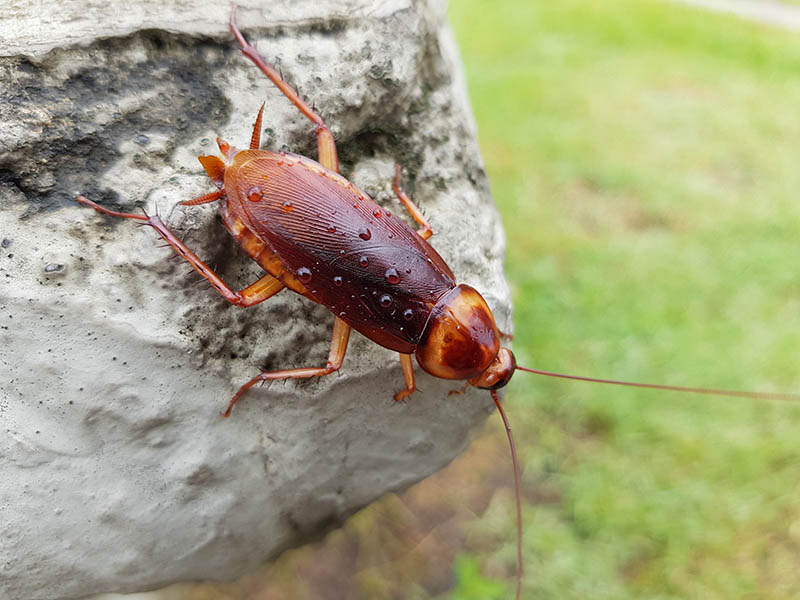
| Scientific Name: | Periplaneta americana |
| Size: | 3 inches |
| Found In: | Restaurants, grocery stores, and bakeries |
| Lifespan: | 12 months |
Because they can grow to almost 3 inches long, it’s hard to miss the American cockroach. Luckily, they spend most of their life in sewers and dark, moist parts of your home like the basement. Unfortunately for restaurant owners, American cockroaches are also usually found in restaurants, where they dine on the smorgasbord of food.
Like their insect brethren, the American cockroach will eat anything, especially garbage and certain types of plants. Another unfortunate fact is that the American cockroach is an excellent climber and is often seen on ceilings and scaling walls and trees.
Like several other cockroaches we’ve seen today, American cockroaches breed quickly, so keeping them away by eliminating their food source is strongly suggested. Sealing cracks and crevices where they enter is also advised, but since they can squeeze through the tiniest cracks, it’s often a losing proposition.
What Types of Iowa Cockroaches Infest your House?
Cockroaches will typically infest anywhere they have a food and water source. While you might think food is the key, it’s water that they seek most. That’s because, while the typical cockroach can live for about a month without food, they can’t go much more than a week without water.
For example, you won’t find many cockroaches in the desert because it’s far too dry for them to survive. In Iowa, four of the cockroaches on today’s list tend to infest homes, including the German, Brown-banded, American, and Oriental ones.

How Can you Tell which Type of Cockroach you Have?
To the untrained eye, all cockroaches look more or less the same: brown, oval, and disgusting. Figuring out exactly which type is infesting your home can help you eradicate them or, at the very least, keep their numbers to a minimum. Below are a few ways to tell which type of cockroaches you have in your home.
Their Size
Cockroaches, as we’ve already seen, come in a few sizes. Admittedly there’s not a huge difference, but some are significantly larger than others, including the American cockroach that can grow 2 to 3 inches long.
Brown-banded cockroaches are the smallest of the typical home invaders and are only about ½ an inch long. The rest are about an inch long, so telling them apart becomes more difficult.
Their Coloring
The different species of cockroaches are similar in shape and color, but some have distinctive markings. For example, American cockroaches have a figure-8 pattern on the back part of their head, while German cockroaches have two darker stripes of color down their body. Brown-banded cockroaches, as their name suggests, have a noticeable brown band across their large wings.
Their Preferred Habitat
All cockroaches are drawn to water and food but tend to have different likes and dislikes regarding where to live. Oriental cockroaches, for example, can often be found outside your home in leaf piles, stacks of wood, and under paving stones.
Brown-banded cockroaches prefer a very dry environment for breeding and, unlike most, like to do so up high, including on the top shelves of kitchen cabinets.’
How To Get Rid of Cockroaches in Your Home Without Chemicals
Very few homeowners in Iowa like having cockroaches in their homes, but many also dislike using toxic chemicals to get rid of them. If that’s you, below are several natural methods you can use to eliminate cockroaches without bombing, sprays, or foggers.
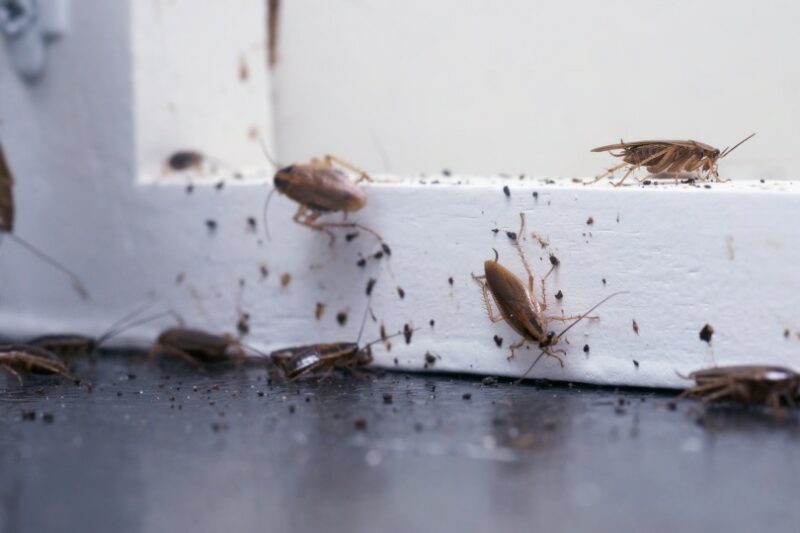
Baking Soda and Onions
While this might sound too good to be true, plain old baking soda will kill cockroaches and do it very effectively. It’s easy, too! All you need to do is slice a few onions in half and then sprinkle the halves liberally with baking soda.
Then, place the onions on a plastic plate anywhere you’ve seen cockroaches. When they eat the onions (and they will), the baking soda will cause gases in their stomach that make them explode. Just be sure to clean up afterward and keep the onions where they can’t get to them if you have a dog. Onions can be very toxic to dogs.
Diatomaceous Earth
As an excellent natural insecticide against cockroaches, diatomaceous earth (DE) dehydrates them, and the sharp particles badly damage their exoskeletons. To use this solution, buy a bag of food-grade DE and spread it liberally wherever you’ve seen cockroaches.
Diatomaceous earth is safe for pets, but you must clean up and re-apply it often to keep cockroaches from spreading.
Borax
Did you know that borax is a natural cockroach killer? It is, and it’s safe to use too! To use it, mix 1 cup of borax with a cup of white sugar and spread it wherever you’ve seen roaches. Eating the sugar/borax mix will dehydrate them and kill them in a matter of minutes.
Seal Entrances Where Cockroaches Come Inside
One of the best ways to prevent a cockroach infestation in your Iowa home is to keep them from entering in the first place. To do that, you need to diligently (and repeatedly) seal any cracks, gaps, and holes where they can get inside.
When doing so, pay particular attention to windows and doors, which typically have the largest gaps. Weather stripping is also problematic and should be sealed or repaired. Experts suggest re-sealing every season since caulk and other sealants tend to pull away and degenerate with time.
Keep Food Waste to a Minimum and Garbage Sealed
Like all living creatures, cockroaches need three things to survive: air, water, and food. While you can’t get rid of the air, you can reduce or eliminate water and food. Remember that you must do so inside and outside your home.
For example, cockroaches will come for the feast if you keep your kitchen spotless, but your outdoor garbage can is a disgusting mess. Also, keep standing water to a minimum, including birdbaths. (Sorry, bird lovers.) You should keep wood piles as far from your home as possible and keep any bushes, plants, and trees next to your home trimmed back as much as possible.
Final Thoughts
Although they’re disgusting, the good thing about the five cockroaches found in Iowa is that they don’t bite or sting. They spread some diseases, especially if you have a bad infestation. That’s why it’s always a good idea to do everything you can to keep that from happening.
Did you get the information you needed from our article? We hope you did and that it helps you determine which kinds are invading your home and how to get rid of them. One last suggestion is this; if cockroaches in your home have gotten out of hand, calling a reputable exterminator might be your only opinion to get rid of them.
- https://smithspestmanagement.com/blog/post/how-to-get-rid-of-roaches-in-your-home/
- https://www.pestworld.org/news-hub/pest-articles/cockroach-identification/
- https://www.prevention.com/life/g29656601/types-of-cockroaches/
- https://www.pestworld.org/news-hub/pest-articles/fascinating-cockroach-facts/
- https://farmfoodfamily.com/types-of-cockroaches-in-iowa/#:~:text=There%20are%20five%20types%20of,and%20the%20Pennsylvania%20wood%20Cockroach.
Featured Image Credit: RHJPhtotoandilustration, Shutterstock
Contents

